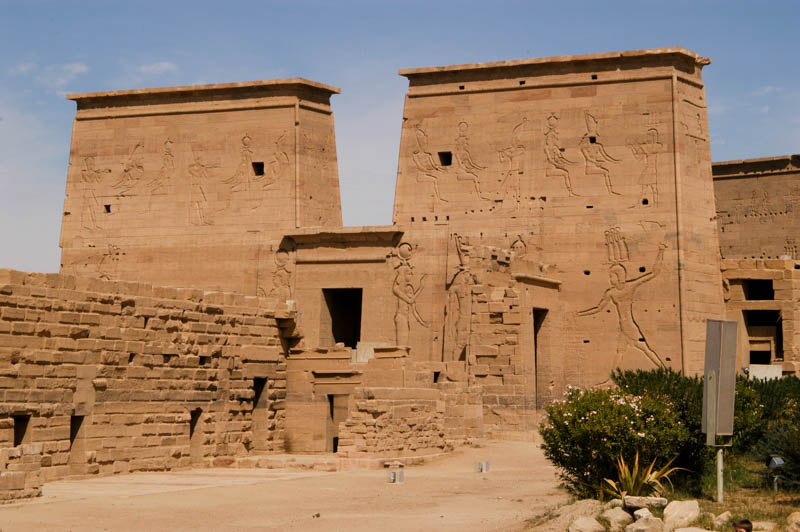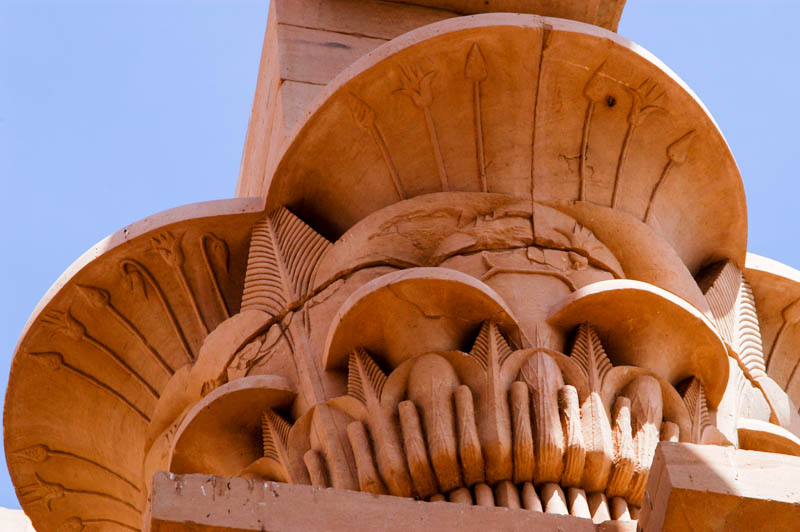One of the most visited ruins in Aswan is the enormous Temple of Isis on Philae Island. The ruins here have been moved from the original island of Philae in 1970, block by block — although like the other temples that UNESCO moved, it’s pretty hard to tell.

The current location is a new island, Agilka, and the axis of the temples has changed a bit — they no longer overlook Biga island, which was the legendary birthplace of Osiris.
The island has numerous ruins, other than the most obvious Temple of Isis which dominates the site. The ruins here are Greco-Roman and span nearly eight centuries of building.
From the south, where you enter climb the steps to the temple courtyard, begins an enormous colonnade and courtyard. There is a small, early ruin called the Kiosk of Nectanebo and a completely ruined Temple of Arensnuphis and Chapel of Mandulis and of Imhotep. The couryard is oddly shaped, leading to a huge first pylon and Mammisi (Birth house) The enormous Temple of Isis dominates the island

My favorite structure on the island is the Kiosk of Trajan — often called the Pharaoh’s Bedstead — which is a small, elegant building with enormous columns. Further on is a Temple of Hathor, mostly ruined; far up the island to the north is a completely ruined Temple of Augustus and the stocky remains of the Gate of Diocletian.
There is a sound and light show here, which is pretty good. Not half so cheesy as the one at Giza, and it is a pleasure to walk through ruins at night, lit up dramatically. Definitely worth the price and a few laughs at the camp of it all.